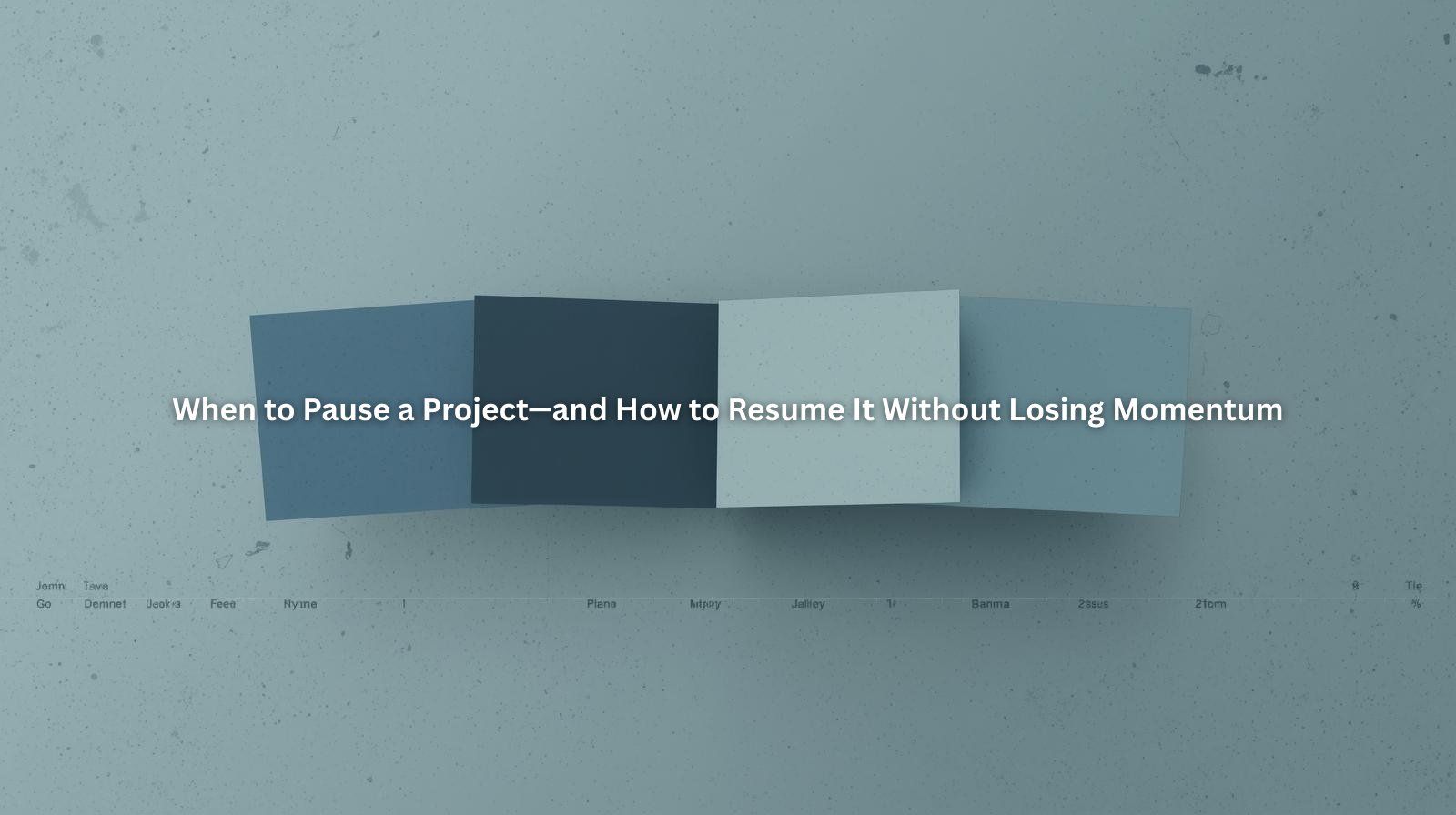How to Conduct a Weekly Review That Is Actually Helpful

Why a Weekly Review is the Secret to High Performance
Most professionals spend their weeks jumping from task to task, reacting to emails, and constantly shifting priorities. By Friday, it’s easy to feel like you’ve been busy—but not necessarily productive.
That’s where a weekly review comes in.
A weekly review is a structured reflection process that helps you:
✅ Assess progress on key goals
✅ Prioritize the right tasks for the upcoming week
✅ Eliminate distractions and inefficiencies
✅ Reduce stress by bringing clarity to your workflow
Yet, many people either skip weekly reviews or do them incorrectly—turning them into time-consuming, surface-level check-ins instead of productivity boosters.
In this guide, we’ll break down how to conduct a weekly review that actually improves productivity, helping you stay on track, eliminate bottlenecks, and get more done.
Step 1: Review the Past Week (What Worked & What Didn’t?)
📌 Why It Matters:
Before planning ahead, you need to look back. Without reflection, you risk repeating mistakes, overlooking achievements, or carrying over inefficiencies.
🔹 How to Do It:
1️⃣ Look at Completed Tasks:
- What did you accomplish?
- Which tasks or projects moved forward?
- What small wins should be acknowledged?
2️⃣ Identify Bottlenecks:
- Where did you waste time or get stuck?
- Were there unnecessary meetings or distractions?
- Did you miss deadlines? If so, why?
3️⃣ Analyze Energy & Focus Patterns:
- When were you most productive?
- When did you feel drained or distracted?
💡 Pro Tip: Use a task management tool like Project Book to quickly review completed tasks and backlog items. This eliminates the need to rely on memory or scattered notes.
Step 2: Organize & Clean Up Your Workspace
📌 Why It Matters:
A cluttered workspace—whether digital or physical—adds mental stress and reduces efficiency.
🔹 How to Do It:
✔ Clear Your Inbox & Notifications:
- Archive or respond to pending emails.
- Turn off unnecessary alerts that distracted you last week.
✔ Declutter Your Digital Space:
- Organize project files.
- Update your to-do list to remove outdated or irrelevant tasks.
✔ Declutter Your Physical Desk:
- A clean desk = a clear mind.
- Take 5-10 minutes to reset your workspace.
💡 Pro Tip: Set up automated task sorting in Project Book to clean up overdue tasks and prioritize them for next week.
Step 3: Review Goals & Align Priorities for Next Week
📌 Why It Matters:
Without a clear goal-checking system, you risk spending another week working on low-priority tasks instead of high-impact goals.
🔹 How to Do It:
✔ Review Long-Term Goals:
- Are your daily and weekly tasks moving you closer to your quarterly or yearly goals?
✔ Identify Priority Tasks:
- Which tasks must be completed next week?
- Are any deadlines approaching?
✔ Set Weekly Objectives (The Big 3):
Instead of drowning in an endless to-do list, pick three high-impact priorities for the week.
💡 Example:
Instead of saying: "Finish work on all projects,"
Set clear, actionable objectives like:
✅ Complete and submit Client X’s marketing strategy by Wednesday.
✅ Finalize team proposal for Q2 budget by Friday.
✅ Spend 2 hours optimizing internal workflow automation.
💡 Pro Tip: Use Project Book’s backlog to help you zero in on what needs to be done this week, and what can wait.
Step 4: Plan & Time-Block Your Week
📌 Why It Matters:
If you don’t schedule your priorities, distractions will fill your time instead.
🔹 How to Do It:
✔ Time-Block Your Important Tasks:
- Assign blocks of time for deep work.
- Keep meetings contained to specific slots.
✔ Batch Similar Tasks Together:
- Reply to emails at set times instead of constantly checking.
- Group similar client work to improve efficiency.
✔ Leave Buffer Time for Unexpected Tasks:
- Don’t overbook yourself—things always pop up.
💡 Example: Instead of checking emails throughout the day, schedule two blocks (e.g., 11 AM & 4 PM) for email responses.
💡 Pro Tip: Sync your Project Book task list with your calendar for a seamless scheduling experience.
Step 5: Reflect & Reset for a Fresh Start
📌 Why It Matters:
A weekly review isn’t just about productivity—it’s also about mental clarity and motivation.
🔹 How to Do It:
✔ Celebrate Wins (Big or Small):
- What went well this week?
- Did you overcome a challenge?
- Recognizing progress keeps you motivated.
✔ Check-in on Work-Life Balance:
- Are you overloading yourself?
- Do you need to adjust your workload?
✔ Set an Intention for the Next Week:
- What’s your main focus or mindset goal?
- Example: “Stay proactive instead of reactive.”
💡 Pro Tip: Use Project Book’s along side your end-of-week review to log insights and keep track of your personal growth.
Final Thoughts: A Weekly Review Is Your Secret Weapon for Productivity
Most people jump from one week to the next without a clear system, leading to repeated mistakes, missed deadlines, and productivity slumps.
🚀 A well-structured weekly review ensures you:
✅ Work on the right tasks, not just the urgent ones.
✅ Eliminate inefficiencies and distractions.
✅ Maintain a healthy balance between work and personal life.
And the best part? It only takes 30-45 minutes but saves you HOURS of wasted time the next week.
💡 Ready to streamline your weekly review process?
Project Book helps you track tasks, set priorities, and reflect on progress—all in one place.
📌 Try Project Book today and take control of your productivity.


